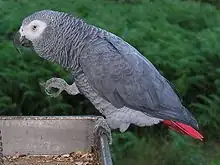The business of mind storage became a profitable one, after the discovery of a magical process that allows the memories and personality of a living being to be transferred into another body. Consciousnesses are stashed in animals (or rented humans, for the wealthy) while the body undergoes surgery. Dangerous prisoners suddenly become much easier to take care of. Falconry becomes an extremely popular hobby, although in a rather altered form. The process is easy and cheap, only requiring a trained mage to do it. While in another body, one is fully capable of controlling and using the host body as if it were one's own.
For the purposes of this question:
Any vertebrate is capable of holding one human mind for an unlimited amount of time.
Intelligence is not affected by one's current body, only by the original.
If the host dies, the mind stored in it is lost.
This takes place on modern day Earth.
The host's mind does not exist while another mind is using that body.
My question: Based on affordability, portability, safety, and other factors, what animal is overall the best option for a mind storage business (primarily for hospital patients with painful conditions)? For example, mice would probably not be a good choice, because they have a short lifespan and could be too risky to use.

